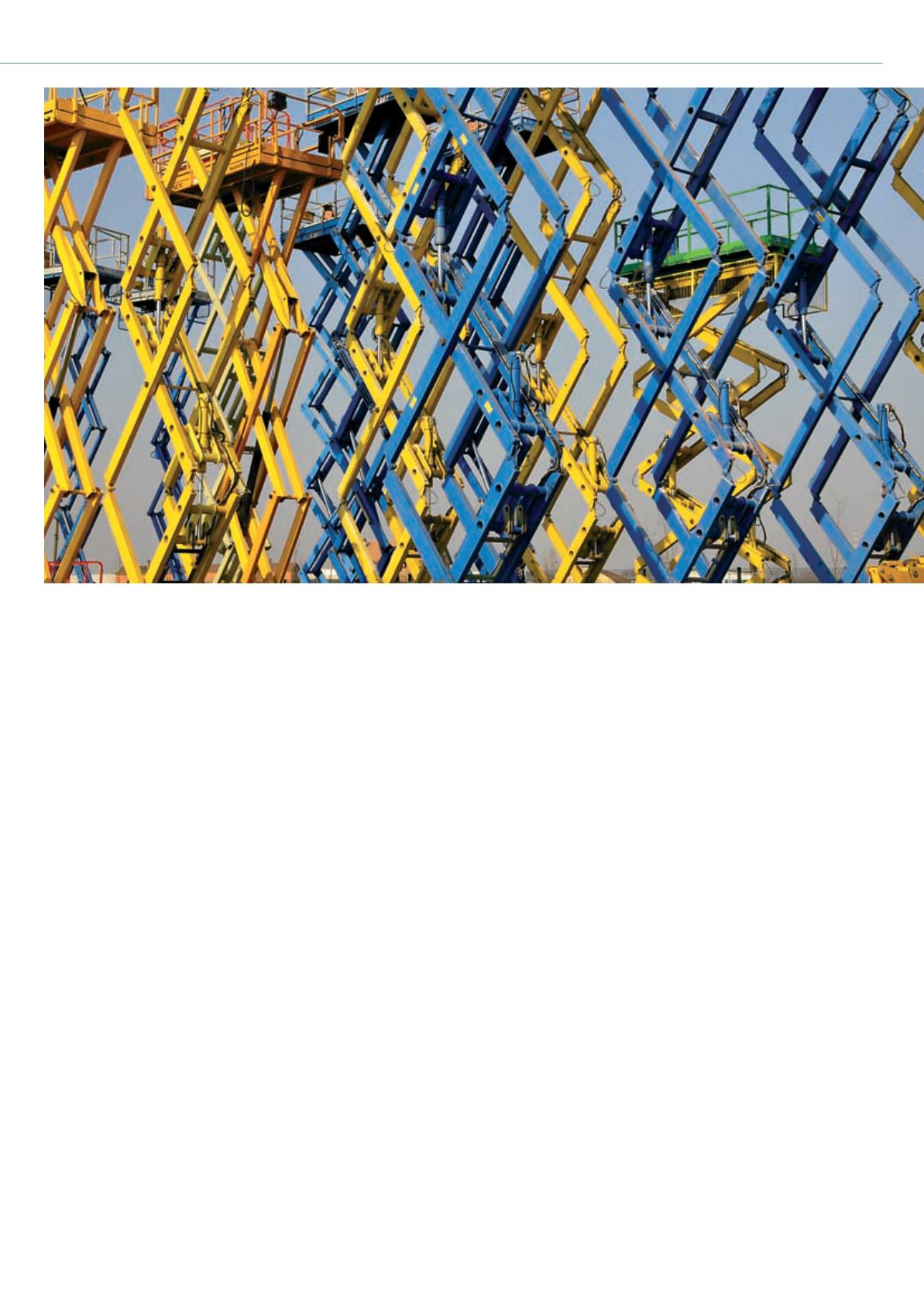
39
NOVEMBER-DECEMBER 2013
access
INTERNATIONAL
Safe and secure
William Holler
, senior vice
president of US insurance
broker Hays Companies,
explains how the powered
access equipment
insurance market has
changed over the last
30 years and what
lessons can be learned
internationally.
A
few, short 30 years ago there was no
such thing as a powered access industry;
much less insurance for it.
One of my very first insurance clients in
the aerial equipment rental business was
Equipment Supply, Inc. They credited me with
‘teaching’ the insurance industry what an aerial
platform was and how it would revolutionise
the access/scaffolding industry. Deservingly
or not, I made a career out of specialising in
insuring manufacturers and dealers in the aerial
work platform and access industry.
I currently work at Hays Companies, in
their Chicago office. Hays Companies is the
19th largest Insurance Broker in the USA. My
associate Debbie Szyszka and I have always
had a specialised insurance programme for the
aerial equipment industry.
In the beginning, the insurance companies
really had no idea what or how these powered
aerial scissors and booms would work out.
Many of them felt that allowing an operator to
be able to move these machines at height was
insane. Other insurance carriers were starting
to believe that anything would be safer than the
scaffolding/ladder combination.
The general liability exposure has always
been the toughest coverage to insure. At the
beginning, AWP rental companies were paying
in excess of 3% of receipts, with very high
retentions, deductibles. As the access industry
>
became safer with pothole protection, lock out
circuits, etc., the general liability rates started
to fall. The rates went down fairly quickly,
although they stayed at 1.5% for several years.
I remember all of my customers rejoicing when
the rates finally got to 1% of revenues.
Rates drop
As the aerial equipment manufactures made
safety a priority and as OSHA and ANSI
mandated safety procedures; the insurance
industry became more comfortable with this
new phenomenon. General liability rates
dropped significantly to under US$5/1,000 and
even lower on larger accounts.
Even though the insurance rates were
dropping as the equipment became safer and
the construction economy picked up, the
liability insurance has always been provided by
surplus lines insurance companies, which do
not file rates with the ISO, insurance service
offices, in any state. Surplus lines companies
determine their own rates based on exposure,
losses and appetite.These companies specialise
in high hazard and high risk exposures.
Amazingly, with all the improvements in the
manufacturing processes, the extensive training
provided by the aerial rental companies, the
extensive maintenance provided by the aerial
rental companies and all the other significant
improvements made over the past 35 years; for
INSURANCE


